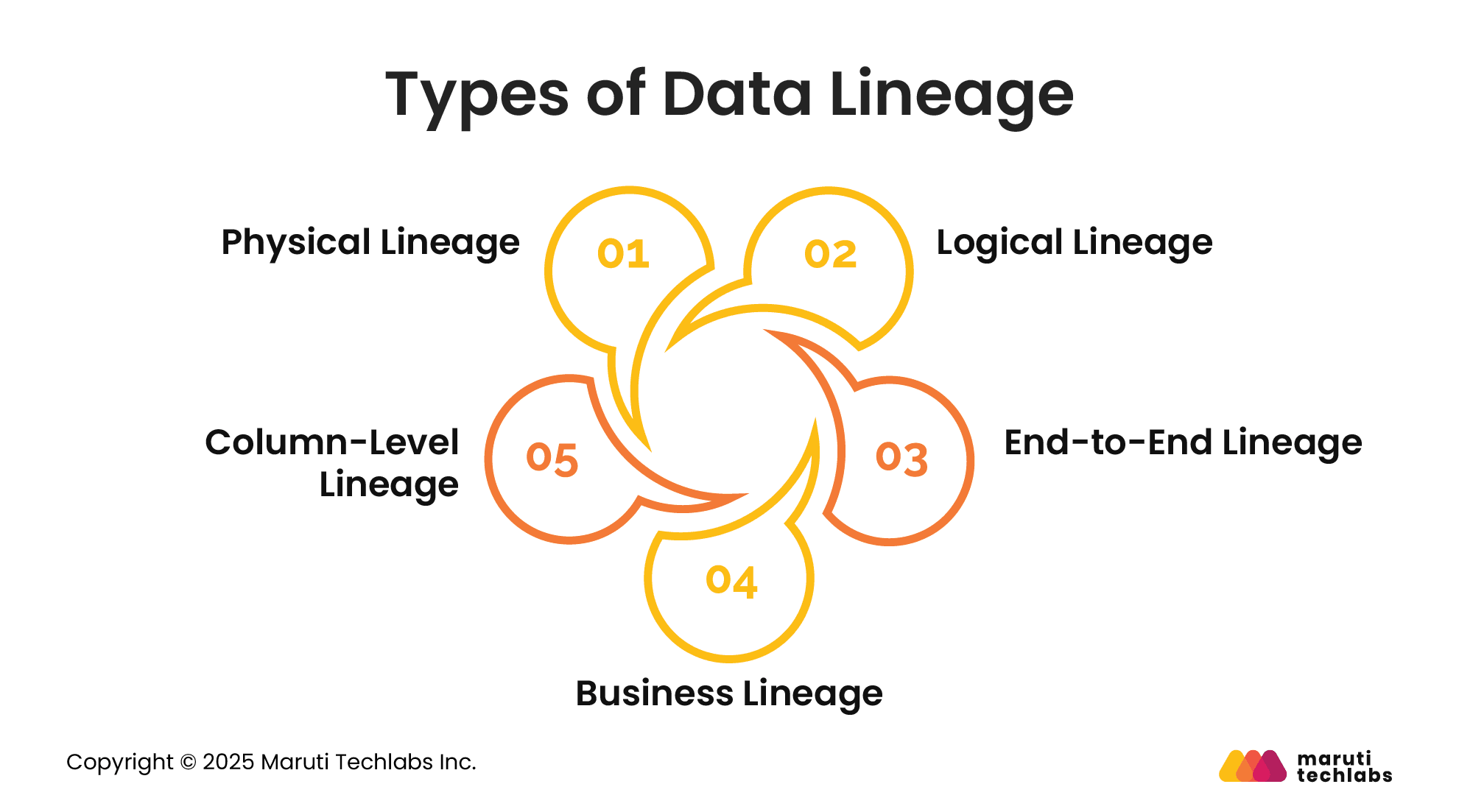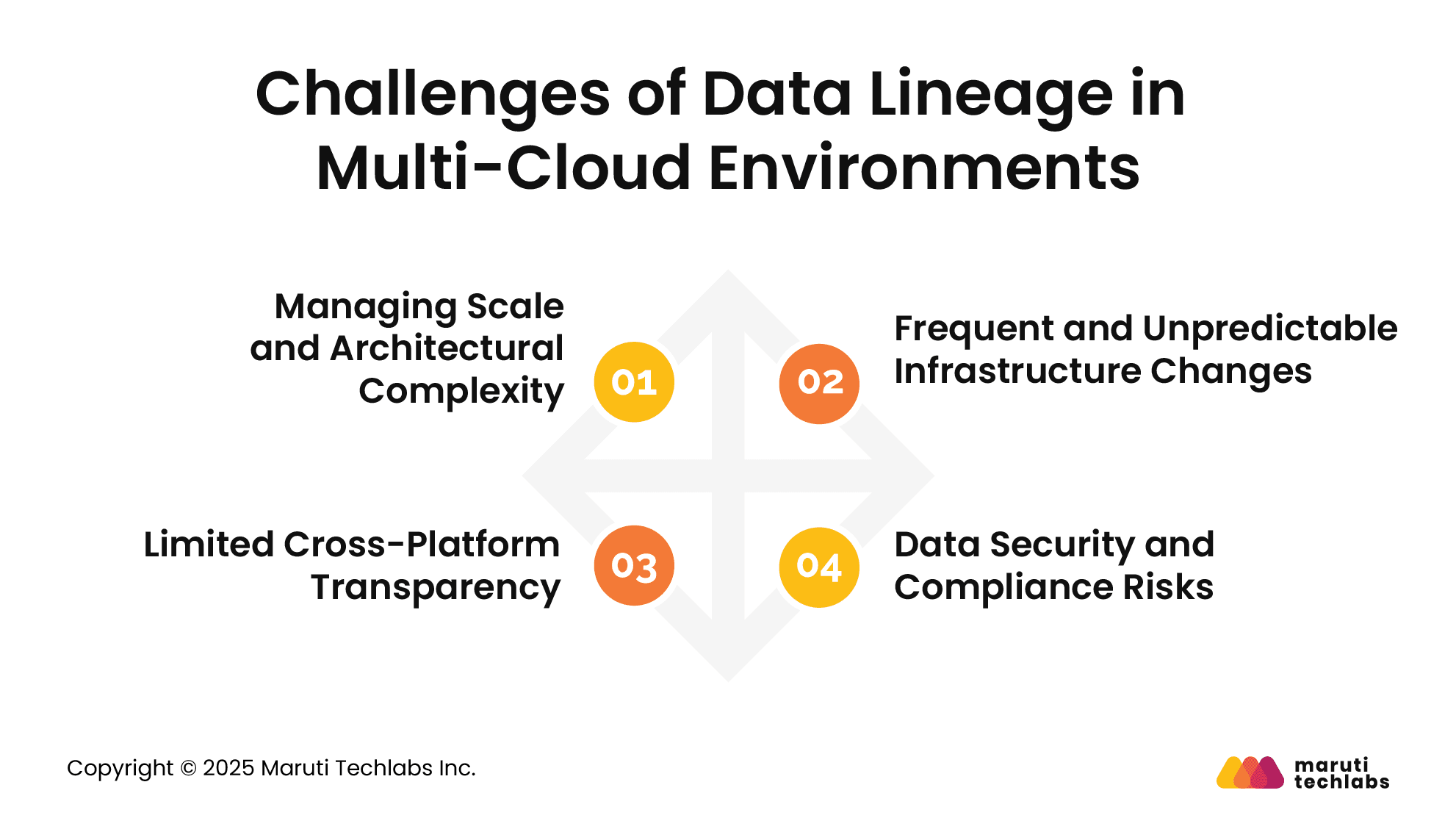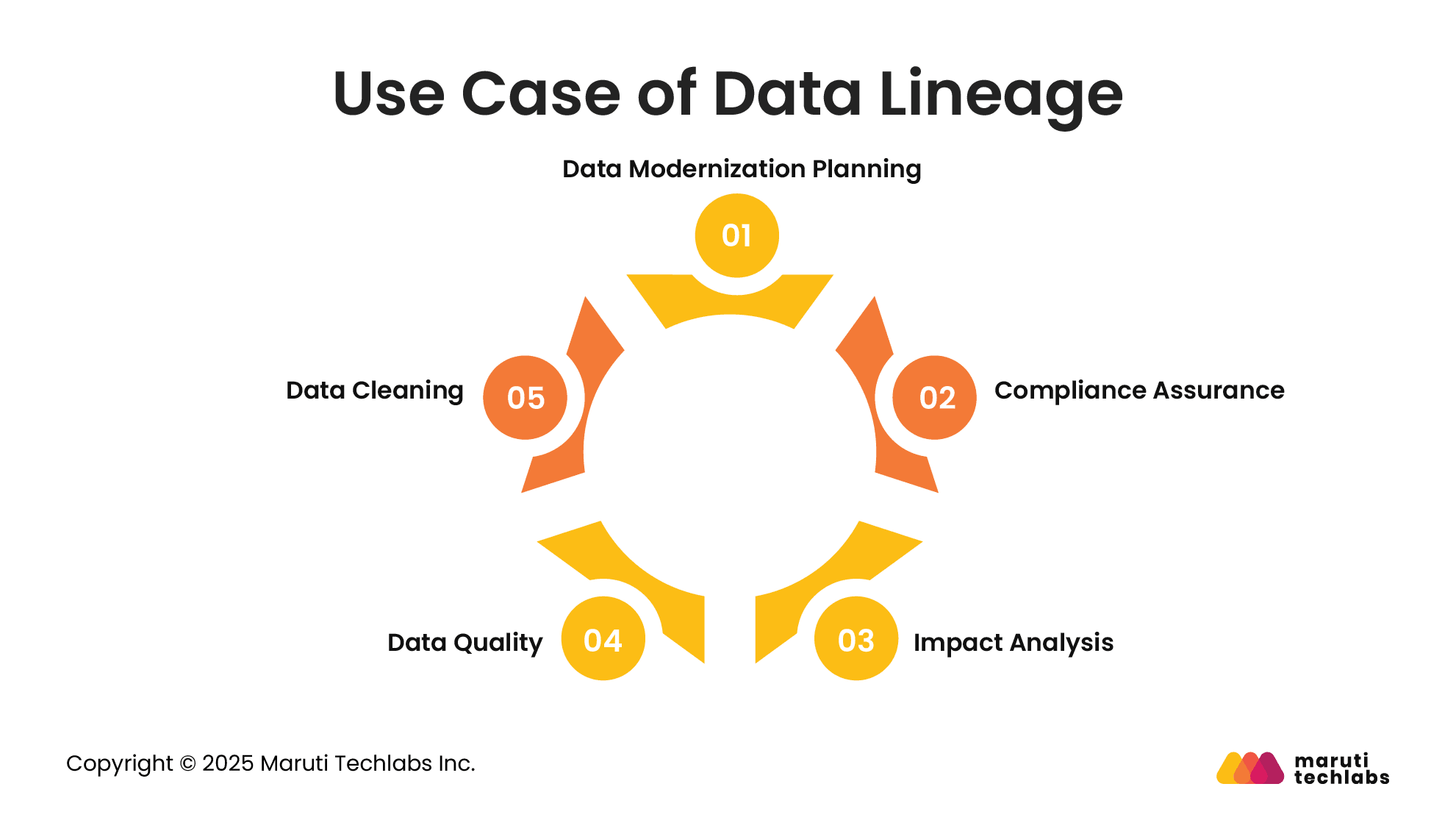

Best Practices to Build Reliable Data Lineage in Multi-Cloud Environments






Businesses today rely on data for everything—from planning sales campaigns to improving internal processes. However, that data is only helpful if teams can trust it. And trust comes from knowing where the data came from, how it’s been used, and whether it has been changed along the way. That’s what data lineage helps with—it shows the whole journey of your data so everyone is on the same page.
Data lineage provides transparency by tracking how data moves between systems, who touches it, and where it lives, whether in a database, a data lake, or a cloud platform. It also covers how data is created, transformed, or updated, for example, when records are imported into a CRM or duplicate entries are cleaned up. This visibility is key to ensuring your data remains accurate, secure, and reliable.
Things get more complicated when organizations use multiple cloud providers like AWS, Azure, and Google Cloud. While this multi-cloud approach gives companies more flexibility and helps with performance and cost control, it also makes data management harder.
Each platform has its tools and standards, and combining them can be challenging, especially when tracking data’s path across systems.
In this blog, we’ll examine data lineage, the challenges of maintaining it in multi-cloud setups, and practical ways to manage it better. We’ll also explore a real-world example and discuss some tools that can make data lineage more manageable in a cloud-diverse environment.
Data lineage is all about understanding your data’s journey—from where it starts to how it changes and where it ends up. It tracks every step your data takes, including when it’s created, modified, moved, or transformed. Think of it as a map showing how data flows through your organization, helping everyone see the whole picture.
Lineage tools help document this journey, especially when data goes through multiple processes like ETL (extract, transform, load) or ELT. They record when and how the data was updated, which makes it easier to check for accuracy and consistency. This visibility is crucial whether you’re fixing a reporting issue, tracing an error, or meeting compliance needs.
There’s no one-size-fits-all when it comes to data lineage. Depending on what you’re looking to understand, different types of lineage offer different insights:

This shows how data physically moves between systems, databases, or files. Engineers and IT teams can use this to understand where data is stored and how it’s processed.
This focuses on what happens to the data, like how it’s grouped, filtered, or summarized for reports. It’s easier for business users to follow because it skips the technical details.
This combines both physical and logical views to show the full story—from data entry to final reporting. For example, it tracks a customer’s data from a CRM system to a dashboard.
This explains how data supports business goals and decisions. It’s about context—why the data matters, who uses it, and how. It’s especially helpful for governance and compliance teams.
This goes deep into specific fields, like tracking changes to a “Customer Email” column across systems. It’s essential for audits, sensitive data tracking, and detailed analysis.
Knowing where your data has been isn’t just a nice-to-have—it’s critical for several reasons:

It's easier to catch and fix issues when you can trace where data came from and how it changed. This helps ensure that the data driving your decisions is clean and trustworthy.
Meeting Compliance Requirements
Regulations like GDPR and HIPAA require clear records of data handling. Lineage helps you show auditors that you’ve managed data properly—where it was stored, how long it was stored, and who accessed it.
Faster Debugging & Troubleshooting
When something breaks or doesn’t look right in a report, lineage lets you trace the problem back to the source. You don’t have to dig through systems blindly—you have a path to follow.
Stronger Decision-Making
Seeing the full context behind your data helps you make smarter choices. Understanding how and where a dataset was created puts you in a stronger position to trust it or challenge it.
More Efficient Operations
Lineage gives teams a shared understanding of how systems connect and depend on each other. This makes it easier to plan changes, streamline processes, and avoid disruptions.
Maintaining accurate data lineage becomes significantly more difficult when working across multiple cloud platforms. Each environment brings its own tools, services, and challenges, which can create roadblocks to visibility, consistency, and control. Below are some of the key difficulties organizations often face:

Cloud environments are designed for rapid growth and integration. As more services, data sources, and systems are added, tracking data flow across all components becomes increasingly complex.
Cloud resources are highly dynamic, scaling up or down, appearing or disappearing based on demand. This fluid nature makes it challenging to capture a stable, accurate view of how data moves over time.
When using multiple cloud providers like AWS, Azure, and GCP, organizations often struggle with inconsistent tooling and a lack of unified visibility. This can hinder efforts to establish complete, end-to-end lineage.
Sensitive data often passes through various cloud services and locations. Without strong lineage practices, it becomes harder to ensure regulatory compliance and safeguard data privacy across the board.
 1. Manage Metadata Carefully
1. Manage Metadata CarefullyMetadata tells the story of your data — where it started, how it changed, and where it ended up. Capturing and organizing this information helps you understand how data moves and evolves.
Having one reliable space to store all your metadata makes it easier to track changes and keep things consistent. It also gives everyone across teams the same version of the truth.
Manual tracking is slow and prone to errors. Automated tools help you quickly capture and map data movement, saving time and giving you a clear view of how your data is being used.
Some tools are built specifically for cloud platforms. These are better suited for tracking data across services like AWS, Azure, or GCP and are easier to integrate with your cloud setup.
Strong data governance means setting clear rules about how data is collected, used, and tracked. These rules help keep your data clean, compliant, and reliable.
Relying on automation means less room for human error. These tools can keep a close watch on data changes and give you up-to-date lineage without extra manual work.
Data is constantly changing. Regularly review your lineage maps to catch any gaps or mistakes early. It keeps your information accurate and trustworthy.
Make sure your lineage practices respect privacy rules like GDPR or HIPAA. Use encryption and strong access controls to protect sensitive data at every step.
Data lineage helps teams make better decisions by showing how data moves and changes over time. Here are some key ways it’s used:

When moving to the cloud or updating systems, lineage helps teams understand where data lives and how it flows. This makes planning smoother and helps clean up outdated data along the way.
It supports data privacy rules like GDPR by making it easier to track how sensitive data is used and stored, helping avoid compliance risks.
If something in the data changes, like a field name or source, lineage helps see what will be affected across systems and reports.
Lineage shows where data comes from and how it’s changed, helping teams catch issues early and trust the data they use.
It helps find old or unused data so teams can delete or archive it, keeping systems lean and efficient.
If you’re working across multiple cloud platforms, open-source tools can help track your data’s journey. Here are some popular ones:
As organizations handle more data than ever, understanding how that data flows and transforms is becoming essential. Data lineage helps teams build trust in their data by offering visibility into its entire lifecycle, ensuring compliance, improving quality, and supporting modernization efforts. With clearer insights, technical and business users can make faster, more confident decisions.
The future of data lineage lies in scale and automation. As businesses continue moving to the cloud and embracing AI, the need for real-time, automated lineage tracking will only grow. Tools that log every transformation are already enabling smarter data management.
Technical users need detailed, column-level lineage with transformation logic, while business users benefit from simplified views showing relationships, business context, and policies.
For example, one of our clients faced challenges due to its on-premise infrastructure. Scaling was costly and time-consuming. By migrating them to AWS with Infrastructure as Code and managed services, we helped them reduce overhead and improve agility. Read the full case study here.
As part of this transformation, implementing robust cloud security services plays a critical role in ensuring data protection across modern architectures.
Need help navigating your cloud journey? Contact us for Cloud Application Services.
Maruti Techlabs also provides expert cloud application development in New York to support your end-to-end transformation.
Before starting your migration or optimization journey, try our Cloud Migration Cost Calculator to estimate costs accurately and plan a seamless, cost-efficient transition to the cloud.
Data lineage in data governance refers to tracking the complete lifecycle of data, from its origin and movement to transformations and usage. It provides visibility into how data flows across systems, ensuring accuracy, compliance, and accountability.
By documenting each step, data lineage helps organizations enforce policies, manage risks, and build trust in data used for decision-making.
Implementing data lineage involves identifying data sources, mapping how data moves and transforms, and recording dependencies across systems.
Continual updates and stakeholder collaboration are key to success.
In Master Data Management (MDM), data lineage refers to tracking how master data is sourced, cleansed, transformed, and shared across systems. It helps ensure consistency, traceability, and governance of core business entities like customers, products, or suppliers
By tracing the data journey, MDM lineage enhances compliance, builds trust in master data, and helps resolve discrepancies across departments.
Data lineage visualization maps the data flow visually, highlighting its origins, movements, and transformations across systems. These visual maps help technical and business users understand data dependencies, transformations, and relationships.
Visualization simplifies impact analysis, supports compliance, and improves transparency, making managing and trusting complex data environments easier.


